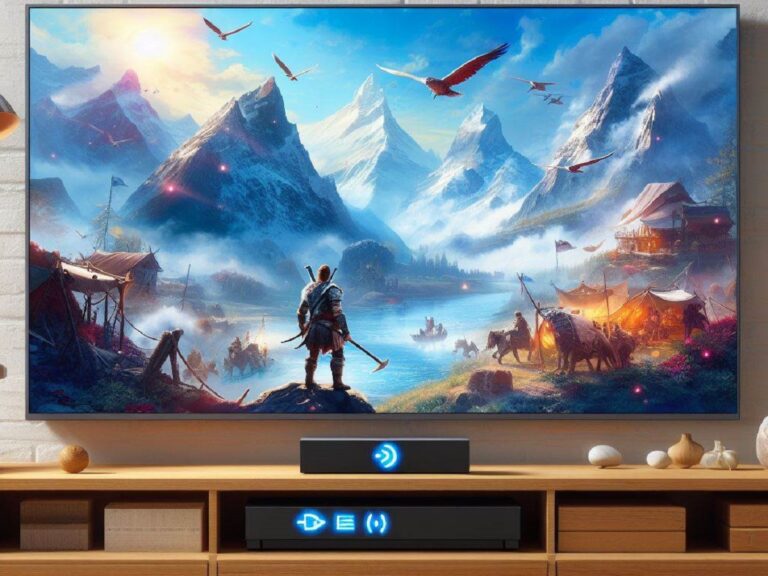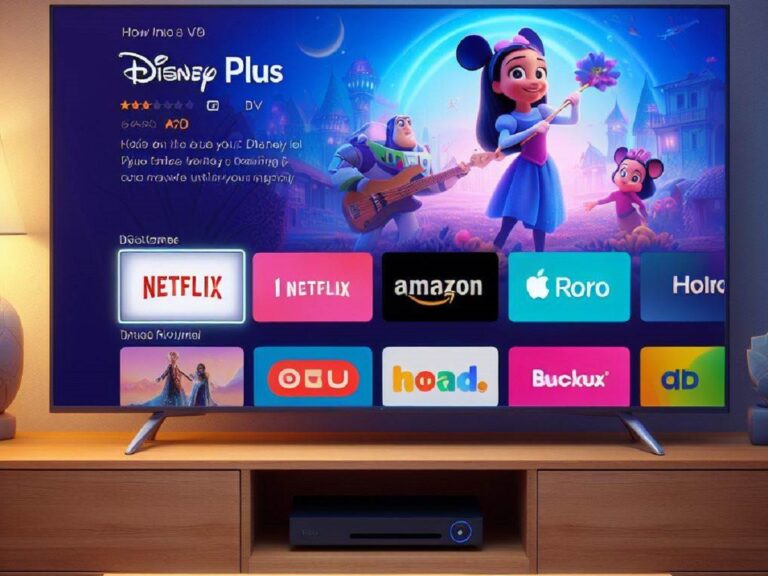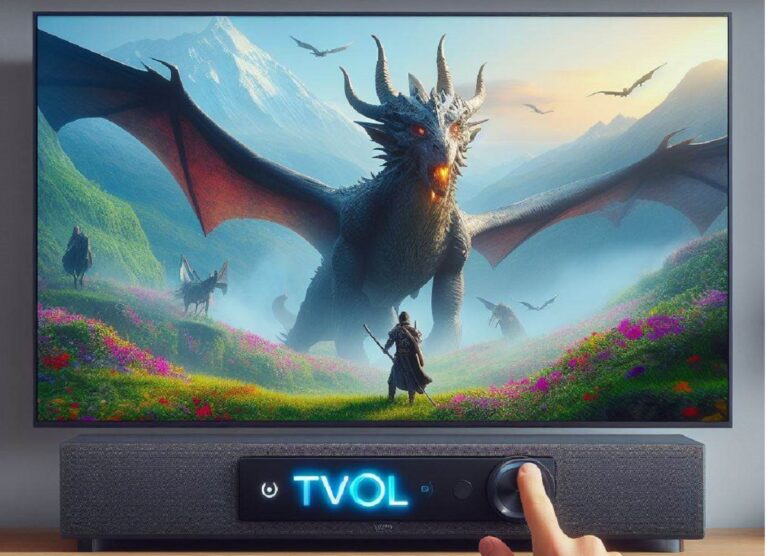Craving an immersive cinema experience at home, especially when the lights are low? Choosing the right TV for dark rooms becomes crucial. But with so many technologies and acronyms like OLED, QLED, and LED, navigating the options can feel overwhelming. Fear not, movie buffs and gamers alike! This guide dives deep into the best TV technologies for dark rooms, explores their strengths and weaknesses, and helps you find the perfect fit for your home theater.
Why Your TV Matters in Darkness
Traditional LED TVs, while widespread, often struggle in dimly lit environments. Here’s why:
- Black Level: The key factor is a TV’s ability to display deep, inky blacks. LED TVs use backlighting, where a separate panel illuminates the image. This can cause light bleed, where light escapes from the screen, creating a grayish cast on dark areas.
- Contrast Ratio: This metric compares the brightest whites to the darkest blacks. Higher contrast creates a more vibrant and realistic image, especially in low-light settings.
OLED: King of Blacks for a Truly Cinematic Experience (498 words)
Organic Light-Emitting Diode (OLED) TVs are widely considered the champions of dark rooms. Here’s what makes them shine:
- Self-Illuminating Pixels: Unlike LEDs, OLED TVs don’t require backlighting. Each pixel generates its own light and can completely turn off for perfect blacks. This translates to stunning contrast and incredible detail in dark scenes.
- Infinite Contrast Ratio: Since OLED pixels can truly switch off, they achieve an infinite contrast ratio. This means blacks appear truly black, creating a more realistic and immersive viewing experience.
- Viewing Angles: OLED TVs boast excellent viewing angles. Whether you’re seated directly in front or slightly off-center, the image quality remains consistent.
Things to Consider with OLED:
- Burn-in: While rare with modern OLED displays, static images left on the screen for extended periods can cause permanent burn-in. This is less of an issue for viewers who primarily watch movies or shows, but gamers or those who watch static content for long durations might want to consider other options.
- Price: OLED technology is typically more expensive than other display types. However, prices have been steadily decreasing, making them a more accessible choice for many viewers.
Samsung QLED: A Bright Challenger for Dark Rooms
Samsung’s Quantum-dot Light-Emitting Diode (QLED) TVs offer a compelling alternative to OLED, particularly for those concerned about burn-in. Here’s what sets them apart:
- Improved Backlighting: QLED TVs utilize LED backlighting with a layer of quantum dots. These dots enhance color vibrancy and improve overall brightness compared to traditional LED TVs.
- High Contrast: While not achieving perfect blacks like OLED, QLED TVs deliver impressive contrast thanks to advanced backlighting technology. This translates to deeper blacks and richer detail in shadows compared to standard LED TVs.
- Anti-Reflection: Many QLED TVs feature impressive anti-reflection coatings. This minimizes glare and improves viewing in bright rooms, making them a versatile choice.
Things to Consider with QLED:
- Black Levels: Compared to OLED, QLED displays struggle with achieving true blacks due to their reliance on backlighting. This can make dark scenes appear slightly washed out in comparison.
- Viewing Angles: QLED TVs generally offer good viewing angles, but they might not match the near-perfect viewing angles of OLED.
LED TVs: Affordable Option with Caveats
LED TVs remain a popular choice due to their affordability. However, they aren’t ideal for dark rooms:
- Limited Contrast: Traditional LED TVs struggle with achieving deep blacks because of their backlighting technology. This can lead to a washed-out look and reduced detail in dark scenes.
- Light Bleed: Light bleed is a common issue with LED TVs, where light escapes from the edges of the screen, affecting overall image quality and creating a hazy effect.
LED Considerations for Dark Rooms:
- Local Dimming Technology: Some LED TVs offer local dimming technology, which adjusts backlight levels in different zones of the screen. This improves contrast and reduces light bleed to some extent, but it doesn’t match the performance of OLED or QLED.
- Viewing Environment: If your viewing environment is occasionally dark but not pitch black, a high-quality LED TV with local dimming might suffice. However, for truly immersive dark room experiences, OLED or QLED are superior choices.
Beyond Display Technology: Optimizing Your Dark Room Viewing
- Light Control (continued): Dimming or eliminating ambient light is crucial. Invest in blackout curtains or shades to minimize light intrusion from windows. Consider bias lighting behind the TV. This subtle backlight creates a soft glow on the wall behind the screen, reducing eye strain and improving perceived contrast.
- Calibration: Most TVs come with pre-set picture modes, but these may not be ideal for dark rooms. Dedicating time to calibrate your TV’s settings, like adjusting brightness, contrast, and gamma, can significantly improve picture quality.
Choosing the Right TV: Size, Features, and Budget
Having explored display technologies, let’s consider other factors:
- Screen Size: Larger screens create a more immersive experience, but consider viewing distance. Sitting too close to a large screen can be overwhelming. The ideal size depends on your room dimensions and personal preference.
- Smart Features: Many modern TVs boast smart features like built-in streaming apps, voice control, and gaming functionalities. Consider which features are important to you.
- Budget: Display technology significantly impacts price. OLED TVs are typically the most expensive, followed by QLED and then LED. Determine your budget beforehand to narrow down your options.
Here’s a quick comparison table summarizing the key points:
| Feature | OLED | QLED | LED |
|---|---|---|---|
| Black Levels | Perfect blacks | Deep blacks, but not perfect | Limited blacks, light bleed |
| Contrast Ratio | Infinite | High | Moderate |
| Viewing Angles | Excellent | Good | Good |
| Burn-in Risk | Low, but possible | None | None |
| Price | Most Expensive | Expensive | Affordable |
| Ideal for Dark Rooms | Yes | Yes, but OLED is superior | Not ideal, consider local dimming |
Conclusion
The best TV for dark rooms depends on your priorities. If budget isn’t a major concern and you prioritize the ultimate cinematic experience, OLED is the clear winner. QLED offers a compelling alternative with impressive brightness and minimal burn-in risk. If affordability is crucial, some high-quality LED TVs with local dimming technology can still provide a decent viewing experience in moderately dark rooms.
Remember: Consider your viewing environment, budget, and desired features when making your choice. Don’t hesitate to research specific models and read reviews before finalizing your purchase. Happy dark room viewing!





